Friday, May 31, 2013
Toyota Recall Attorneys Add Racketeering Claims To Lawsuits

Wednesday, May 29, 2013
Removing the ball joint VAZ 2110
Ball bearing a rather important piece suspension. On VAZ 2110 2109 ball bearings go much more than classic cars. Often you could see a situation where there was some kind of an old six with a torn wheel (at best). To avoid this, you need time to diagnose a ball bearing. Check the integrity of visual support is almost impossible, and when it is considerable wear you will hardly hear it rattle because the sound in our cars and so lacking. To properly check the ball joints need to raise the vehicle on a lift, substitute for an iron pillar support and lowered the car a bit to load on the support was due to the pressure bearing on the iron pillar. Now we take a crowbar or pry bar and rests on the suspension arm. Then he begins to perform oscillatory motion, as if to vomit support. If you can clearly observe the play in motion sharogo finger - hence reliance is time to change. 1. Turn off the key at 19 nut ball joint to the lever 2. Remover vypressovyvaem finger ball joint of the lever 3. In the absence of the puller nut finger turns away not completely 4. Create a preload assembly shovel and strike a hammer on the lever until the decompression pin 5. Pressing out the mounting paddle down the suspension, we derive the ball pin from the hole lever 6. Head of 17 turns away two bolts attaching ball bearings to the steering knuckle All are now supporting ball in our hands. You can now more accurately verify its faults, just check the backlash sharogogo thumb. New ball joints set in reverse order.
Monday, May 27, 2013
Pasting the car with his hands
Okleit car yourself - not in the cellar. To do this you than the film itself, it will take part assistant for a smooth installation of large sheets of film, as well as availability, pre-cooked, tools and some patience. Of the tools necessary to be reserved by: squeegee made of plastic or felt, with a knife or scissors, spray with water-detergent solution in a ratio of 1 / 10, White Spirit, hairdryer, mounting tape, dry cloth, masking tape. The film has a paper-based and applied on the surface of the car by using the mounting tape. In transferring the film on the surface of a car, it should be smooth squeegee. The main rule when pasting - is necessary to thoroughly clean and degrease the surface with white spirit. Other, no less important rule - pasting should be in place to avoid exposure to dust at room temperature for at least 10 degrees Celsius. Otherwise, defects will be formed. Pasting the car with his hands, is done using the stickers are already ready to use, offered for sale complete with mounting tape. Can also be ordered on their own in any agency on advertising. The procedure of gluing is as follows. 1. After a thorough bathing and drying cars, degreased surface with mineral spirits. 2. With the participation of an assistant to determine the location of the future location of vinyl film, it is necessary to make vinyl and using masking tape to keep the markup that will need to navigate when applied film. In this case, a vinyl film, yet, you can not remove the substrate and the mounting tape. Markings should be given maximum attention. It is also important to remember that the design surface irregularities are often the cause of defects in the pasting. 3. At this stage, you must carefully separate the base paper. The procedure is performed on a flat surface with an assistant. In this case, it should not samoskleivaniya film. The result is a vinyl film with a layer of mounting on it. 4. At this stage, spray, sprayed the place drawing plenty of stickers. It is important that a solution of soapy water flooded the entire surface, without exception. Such wet and soap, surface, allow to adjust the position of the label. Also, due to a slippery surface, it is convenient to expel air bubbles formed under the sticker. 5. Now, on the damp surface of vinyl and fits neatly smoothed squeegee. The air must push the squeegee from the center toward the edges of the film. In the presence of surface design bends, start priglazhivanie should be a central, flat parts, gradually moving to the edges. In the process of smoothing necessary to heat the sticker with a hair dryer. We can not allow the formation of folds and swelling of the film. Smoothing a section of the film, it is necessary at this point to separate the mounting tape. As a result, tension is removed stickers. If you have any wrinkles, it is necessary, carefully peel the section and smooth the back, heating the film dryer. In the field bends the surface, you need a little more heat and stretch the film during smoothing. If necessary, permitted, notching assembly layer, not touching the labels.
Saturday, May 25, 2013
Towbar for Mitsubishi Outlander why do you need and where to get
Presently hitch on the car ceased to be a lot grim truckers to "Moskvich", twice a year, clinging to his jalopy truck with Chopper - planting potatoes in May and in September to clean. Now hitch is not a symbol of the villa zamorochennosti! Promotion to the masses by the authorities of the concept of active rest is bearing fruit, and winter recreation in the fields on a snowmobile, in summer on the water on a water bike and just trailering with the trailer became commonplace. And man, buy - did snowmobile encounters a problem - how to deliver the machine in the field? Under its own power for a long time out, until the spring can not catch. Attach to a car with a truck towing a snowmobile without fail, you can not try. And so, going for segohodom or water motorcycle first take care of the towbar! Turnbuckles somehow classified as a sellers kit, along with kenguryatnik. However, the hitch - first strength member, and the attitude to it as a decorative trinket inappropriate. There is a sense proiskat Internet company, specializes in tow, on their sale and installation. For example: tow bars Mitsubishi Outlander They sell, and consult, and install ... all in one place! However, the hitch can be installed yourself. Mounted hitch on the staff openings provided by the manufacturer, connector electrical trailer to the vehicle mounted with the staffing at the plant. If the seller starts to explain that, they say, "this is a great hitch, but that does not fit - business - then drill a hole" - run out! These people are obviously trying to fool your head - there is no certified and approved by the factory - manufacturer of towbars, that "some are not suitable." Hitch mount on the hardware needed to charge the seller gives you complete with towbar and stretching it must be in accordance with the recommendations in instruktsii.I recently. When planning the purchase and installation of the tow, consider first that you'll hook him! After hitch, as any force element has a maximum load on the ball and passport Towing hitch and if your Mitsubishi is designed for 750 kg Mass of the trailer, then try to move a couple of pallets of brick at a time is clearly not worth it!
Thursday, May 23, 2013
2012 Ford Mustang Boss 302 cars photos and prices





Tuesday, May 21, 2013
2011 hyundai sonata cars wallpapers and reviews
the meat-and-potatoes of the American car market remains the mid-size family sedan. For the past two decades, the undisputed kings of this particular segment have been the Toyota Camry and Honda Accord, especially since the Ford Taurus fell off its pedestal right around 1992.

Many have tried to knock the two Japanese heavyweights (now figuratively and literally) off the hill – and almost as many have failed.



Friday, May 17, 2013
MINI WRC adventure all over again

End of the year draws MINI withdrew from the WRC. At least as a factory team. MINI partner Prodrive, the Countryman WRC JWC still on your own in the sport maintain, albeit without factory support. The reason for MINI again now with the WRC stopen? The harsh economic times. But the view of strong opponents may also sometimes have weighed in the withdrawal of MINI. Include Volkswagen and Hyundai namely recently announced their participation in the WRC.
MINI results
During his brief career in the MINI WRC clinched several top-10 results and three podiums away. Best result so far scored the factory team early this year when the Spanish driver Dani Sordo finished second in the famous Monte Carlo Rally.
Wednesday, May 15, 2013
Celestial navigation
Sunday, May 12, 2013
Aston Martin DBS Superior Black 2011
This is the Aston Martin DBS Superior Black Edition by Anderson Germany.
The German tuner applies a deep-black matte paint finish to this DBS while adding carbon mirrors, tinted windows and window frames in a matte black which also coats much of the other exterior components.
For the engine tuning, Anderson dials up wattage on the V12 from 517 PS (380 kW / 510 bhp) to 565 PS (416 kW / 557 bhp) by means of an ECU remap, catalyst replacement pipes and special manifolds. The DBS also drops 21 kg in curb weight and gets an electronically-controlled vent damper on the black exhaust pipe.
Wheels are the 21-inch glossy black rims with 255 tires at the front and 295 at the back - contrasting sharply with the red brake calipers.
On the inside is the same pattern - a black carbon leather and black Alcantara finish contrasted with red diamond stitching.
Martin DBS debuted along with Daniel Craig in the 2006 James Bond movie Casino Royale, and it is also the one that he literally blew the doors off in the opening chase sequence in the 2008 flick, Quantum Of Solace. It’s been five years since the world first saw it, but the car doesn’t seem to have aged at all. Here in the flesh, the DBS looks oh-so-lovely. Heck, it looked good even after Bond had a go in it!
What’s with the Aston here, you ask? Well, as we proclaimed on the cover of the March issue of Business Standard Motoring magazine, Aston Martin cars officially went on sale in India yesterday. Of the delectable range that is available, we sampled the top-of-the-line model, the V12-engined DBS. Of course, the Aston that tops the scale is the One-77, with its stratospheric price tag, but that’s a limited edition version, with only 77 units to be made. But I am not complaining, because here on the streets of Mumbai, I feel like the world’s most famous spy already, the ravishing supercar turning the heads of young and old alike. I feel underdressed and gauche driving this car.
The Origin of Dodge Charger and What is Dodge Charger B body
 |
| 1965 Dodge Charger-Rear Right View |
 |
| 1966 Dodge Charger Dash-Interior Wheel Drive View |
 |
| 1966–1967 Dodge Charger-Front Left View |
 |
| 1967 Charger NASCAR Spoiler-Rear View |
 |
| 1968–1970 Dodge Charger-Front Right View |
 |
| 1969 Dodge Charger-Front Left View |
 |
| 1972 Dodge Charger-Front Left View |
 |
| 1971–1974 Dodge Charger-Front View |
 |
| 1970 Dodge Charger R T-Front Left View |
 |
| 1975–1978 Dodge Charger-Front Left View |
 |
| 1974 Dodge Charger-Front Left View |
 |
| 1973 Dodge Charger-Front View |
 |
| Dodge Charger-Front Right View |
Mitsubishi Global Small Concept
BENTLEY
Contents[hide]
|
As a separate company (1919–1931)
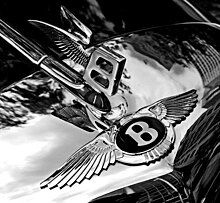
It was on a visit to the DFP factory in 1913 that W.O. noticed an aluminium paperweight, and had the inspired idea of using the lightweight metal instead of cast iron to make engine pistons. The first Bentley aluminium pistons went into service in aero engines for the Sopwith Camel during the Great War.
The company was always underfunded, and Bentley turned to millionaire Woolf Barnato for help in 1925. As part of a refinancing deal, which resulted in his effectively owning the company, Barnato became chairman.
The Bentley Boys
A group of wealthy British motorists known as the "Bentley Boys" (Woolf Barnato, Sir Henry Birkin, steeplechaser George Duller, aviator Glen Kidston, automotive journalist S.C.H. "Sammy" Davis, and Dr. Dudley Benjafield among them) kept the marques reputation for high performance alive. Thanks to the dedication to serious racing of this group, the company, located at Cricklewood, north London, was noted for its four consecutive victories at the 24 hours of Le Mans from 1927 to 1930. Their greatest competitor at the time, Bugatti—whose lightweight, elegant, but fragile creations contrasted with the Bentleys rugged reliability and durability—referred to them as "the worlds fastest lorries".In March 1930, during the Blue Train Races, Woolf Barnato raised the stakes on Rover and its Rover Light Six, having raced and beat Le Train Bleu for the first time, to better that record with his 6½-litre Bentley Speed Six on a bet of £100. He drove against the train from Cannes to Calais, then by ferry to Dover, and finally London, travelling on public highways, and won; the H.J. Mulliner-bodied formal saloon he drove during the race as well as a streamlined fastback "Sportsman Coupé" by Gurney Nutting - he took delivery of on 21 May 1930 became known as the "Blue Train Bentleys"; the latter is regularly mistaken for (or erroneously referred to) as being the car that raced the Blue Train, while in fact Barnato named it in memory of his race.[2][3]
Car models

- 1921–29 3-litre
- 1926–30 4½-litre & "Blower Bentley"
- 1926–30 6½-litre
- 1928–30 6½-litre Speed Six
- 1930–31 8-litre
- 1931 4-litre
[edit] The Rolls-Royce era (1931–1998)
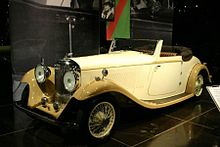




Rolls-Royce acquired Bentley secretly using an entity named the British Central Equitable Trust; not even Bentley himself knew the true identity of the purchaser until the deal was completed.[1] A new company, wholly owned by Rolls-Royce, was formed as Bentley Motors (1931) Ltd. Unhappy with his new subordinate role, W.O. Bentley left to join Lagonda in 1935 when his contract was up for renewal. The Cricklewood factory was closed and sold, and production moved to the Rolls-Royce works in Derby.
When the new Bentley 3.5 Litre appeared in 1933, it was a sporting variant of the Rolls-Royce 20/25, which disappointed some traditional customers yet was well-received by many others. Even Bentley himself was reported as saying, "Taking all things into consideration, I would rather own this Bentley than any other car produced under that name".[1]
After World War II, production of Rolls-Royce and Bentley cars was moved to an ex-wartime engine factory in Crewe, Cheshire. Bentleys increasingly became slightly lower priced Rolls-Royces sans the Rolls distinctive square-shouldered grille. By the 1970s and early 1980s sales had fallen badly; at one point less than 5% of combined production carried the Bentley badge.[1]
During this period Rolls-Royces parent company faltered, failing completely in 1970 following problems with aero engine development. The motorcar division was floated off and became Rolls-Royce Motors Ltd., which remained independent until bought by Vickers plc in August 1980.
Under Vickers, Bentley began to regain its high-performance heritage, typified by the 1980 Mulsanne. Bentleys restored sporting image created a renewed interest in the name and sales as a proportion of combined company output began to rise. By 1986 the Rolls-Royce:Bentley ratio had reached 60:40; by 1991 it achieved parity.[1]
For more on Bentley Motors from 1931 to 1998, see Rolls-Royce and Rolls-Royce Motors.
[edit] Car models
- 1933–37 3½-litre
- 1936–39 4¼-litre
- 1939–41 Mark V
- 1939 Mark V
- 1946–52 Mark VI
- 1952–55 R Type and Continental
- 1955–59 S1 and Continental
- 1959–62 S2 and Continental
- 1962–65 S3 and Continental
- 1965–80 T-series
- 1965–77 T1
- 1977–80 T2
- 1971–84 Corniche
- 1984–95 Continental — convertible
- 1992–95 Continental Turbo
- 1984–95 Continental — convertible
- 1975–86 Camargue
- 1980–87 Bentley Mulsanne
- 1984–88 Mulsanne L — limousine
- 1982–85 Mulsanne Turbo
- 1987–92 Mulsanne S
- 1984–92 Eight — basic model
- 1985–95 Turbo R — turbocharged performance version
- 1991–2002 Continental R — turbocharged 2-door model
- 1999–2003 Continental R Mulliner — performance model
- 1994–95 Continental S — intercooled
- 1992–98 Brooklands — improved Eight
- 1996–98 Brooklands R — performance Brooklands
- 1994–95 Turbo S — limited-edition sports model
- 1995–97 Turbo R — updated Turbo R
- 1995–2003 Azure — convertible Continental R
- 1996–2002 Continental T — short-wheelbase performance model
- 1997–98 Turbo RL — new Turbo R LWB (Long Wheel Base)
- 1997–98 Bentley Turbo RT — replacement for the Turbo RL
- 1997–98 RT Mulliner — Ultra exclusive performance model
- 1999–2002 Azure Mulliner — performance model
- 1999 Continental T Mulliner — firmer suspension
Volkswagen Group ownership (1998-present)
| | This section does not cite any references or sources. Please help improve this article by adding citations to reliable sources. Unsourced material may be challenged and removed. (September 2010) |

Modern Bentleys

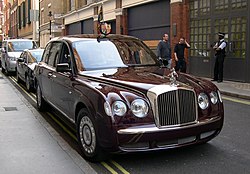
- 1998 – Arnage saloon
- 1999 – Hunaudieres Concept
- 2002 – State Limousine
- 2003 – Continental GT coupé
- 2005 – Continental Flying Spur saloon
- 2006 – Azure convertible
- 2006 – Continental GT convertible
- 2007 – Continental GT Speed coupé
- 2008 – Bentley Brooklands coupé
- 2008 – Bentley Continental Flying Spur Speed saloon
- 2009 – Continental GTC Speed
- 2009 – Azure T
- 2009 – Arnage saloon, Final Series
- 2009 – Continental Supersports
- 2009 - Bentley Zagato GTZ[11]
- 2010 - Bentley Mulsanne
| Bentley automobiles, 1998–present | edit | |||||||||||||||||||||||
| Type | 1990s | 2000s | ||||||||||||||||||||||
| 8 | 9 | 0 | 1 | 2 | 3 | 4 | 5 | 6 | 7 | 8 | 9 | |||||||||||||
| Saloon | Arnage | Continental Flying Spur | ||||||||||||||||||||||
| Red Label | Arnage R/T | |||||||||||||||||||||||
| Arnage RL | ||||||||||||||||||||||||
| Coupé | Continental R | Continental GT | ||||||||||||||||||||||
| Continental T | Brooklands Coupé | |||||||||||||||||||||||
| Convertible | Continental GTC | |||||||||||||||||||||||
| Azure | Azure | |||||||||||||||||||||||
| Mulsanne-based | Arnage-based | Continental GT-based | ||||||||||||||||||||||
[edit] Management
The current board of management consists of Dr. Franz-Josef Paefgen, Chairman and Chief Executive; Dr. Ulrich Eichhorn, Engineering; Alasdair Stewart, Sales & Marketing; Douglas G. Dickson, Manufacturing; Christine A. Gaskell, Personnel; and Jan-Henrik Lafrentz, Finance. Dirk van Braeckel is current Head of Design.[edit] Recent Bentley racing
In 2001–03, the Bentley Speed 8 enjoyed a successful racing streak in the Le Mans series.[edit] Product Placement
[edit] Future cars
MINI Clubvan Concept

MINI has releases the Clubvan Concept ,which will debut at the 2012 Geneva Auto Show at next month.
Based on the Mini Clubman, the Clubvan features only two seats in the front, a stainless steel honeycomb separator behind the cockpit, a flat load floor in the back and opaque polycarbonate panels in place of the rear wide windows.
The MINI Clubvan Concept is finished in British Racing Green paintwork, which extends to the roof, C-pillars and exterior mirror caps.
A MINI source said the Clubvan was extremely likely to make production. And when it does, VAT-registered buyers will be able to claim back the VAT in full thanks to its status as a commercial vehicle.



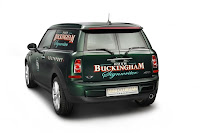

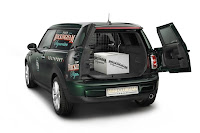




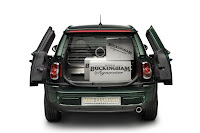
Press Release
MORE SPACE FOR STYLE: THE MINI CLUBVAN CONCEPT.
- Compact lifestyle van for business and leisure
- First concept of its kind in the premium segment
- World premiere at the Geneva International Motor Show 2012
Woodcliff Lake, NJ - February 18, 2012 - Stand-out-from-the-crowd style can also be amazingly practical - and practicality can be surprisingly attractive. The MINI Clubvan Concept paves the way for an innovative vehicle concept without parallel in the premium small car segment. The MINI Clubman-based concept car, scheduled for its world premiere at the Geneva International Motor Show 2012, combines the driving fun for which MINI is renowned with increased load-carrying capability. The MINI experience will therefore find its way into new areas of life, the brands distinctive character gaining new popularity among target groups not previously on the MINI radar.
The closed-off load area behind the front seats and the opaque rear side windows of the new concept set it apart most strikingly from the MINI Clubman, the platform used as its base. The MINI Clubvan Concept uses its broader skill-set to open up new usage possibilities - both business and leisure. Where a businesss customers, product range or operating environment demand a particular style for its vehicles, this premium model can make the perfect delivery solution.
For example, a car in the mould of the MINI Clubvan Concept would fit excellently into the fleet of a fashion designer, art gallery owner or catering service. And its abilities as an all-rounder also tick the right boxes for a photographer with a stack of camera, tripod and lighting equipment to ferry around during the week - and bulky sports and leisure gear to pile on board at the weekend. The MINI Clubvan Concept pulls off the trick of blending enhanced practicality and a well-judged lifestyle focus with natural ease. This ability is based on the impressive adaptability that goes to the heart of the MINI brands heritage.
Calls for maximizing the load capacity of the classic Mini began as early as 1960, just a year after the cars birth; and they were soon heeded. With its 10-centimeter-longer wheelbase (3.94 inches), separate load compartment and split rear doors, the Morris Mini Van was perfectly equipped for commercial use. It also provided the basis for the fully glazed, four-seat Morris Mini Traveller, one of the precursors of todays successful MINI Clubman. And so, more than 50 years on, the MINI Clubvan Concept sees history repeating itself - albeit in a slightly different order.
Two seats, five doors, endless usage potential.
Limiting the car to two seats creates the capacity its owners will need on a day-to-day basis, as well as opening up a whole new world of customization potential. The load compartment of the MINI Clubvan Concept embodies the cars fresh and rigorous interpretation of the principle used in the classic Mini - of providing the maximum amount of interior space on the smallest possible footprint. The load area reaches from the split rear doors right up to the partition grille behind the two seats. The totally level floor makes full use of the interiors depth, and that allows the concept cars load capacity to exceed the maximum achieved by the MINI Clubman.
Six attachment loops recessed into the load compartment floor use elasticized straps to hold items of varying lengths, heights and widths in place - without the risk of them sliding around. The partition grille, which is fixed securely to the car body, ensures that items stowed in the load compartment are kept safely away from the front seats. The lower section of the partition is made from solid aluminum, while the upper section consists of a silver-colored stainless steel honeycomb grating. The side walls and floor of the load compartment are trimmed in high-quality anthracite-colored cloth. The anthracite roof liner, meanwhile, extends along the full length of the interior. This uniform color scheme emphasizes the pure-bred, practicality-oriented character of the MINI Clubvan Concept.
Like the MINI Clubman, the MINI Clubvan Concept is a five-door car with a twist. Two front doors for the driver and front passenger, two side-hinged doors at the rear and the rear-hinged Clubdoor on the right-hand side create comfortable access to the interior. The Clubdoor gives owners the option of loading or unloading smaller items from the side of the car as well as the rear.
The generous levels of space on board the concept car can be exploited in a variety of ways. Commercial users will be particularly pleased to discover the scope for configuring the load compartment to personal requirements. For example, tools and goods can be stored neatly and securely in made-to-measure drawers or shelving units. 12-volt plug sockets in the rear area of the load compartment provide additional practicality.
Exterior design: shields from prying eyes, cuts a distinctive figure.
Impressive practicality and the brands time-honored style lend the MINI Clubvan Concept its unmistakable character. Sharing the exterior dimensions of the MINI Clubman and boasting cleverly increased storage capacity, the concept car is the first premium model in the small-car-based van segment. The exterior appearance of the MINI Clubvan Concept marks it out immediately as a MINI - and therefore as a premium product. The function-led design modifications have no impact on the cars proportions and hallmark MINI design language, but they do give customers the opportunity to combine the demands of commercial use with an appreciation of individual style. The MINI Clubvan Concept comes with British Racing Green exterior paintwork, which extends to the roof, C-pillars and exterior mirror caps. As is usual for vehicles charged with transportation tasks, the rear side windows of the MINI Clubvan Concept are opaque. Polycarbonate sections - their outer surfaces painted in the cars body color - and heavily tinted glass for the rear doors make it difficult to see into the load compartment.
The unbroken paintwork along the cars flanks offers extensive scope for individualization, which the MINI Clubvan Concept highlights to eye-catching effect. The sealed side windows bear the logo of a sign design company based in the MINIs native Great Britain. The hand-applied graphics lend the vehicle a personal look. Indeed, the ultra-versatile MINI carries both its cargo and the companys promotional message with a uniquely stylish verve. The MINI Clubvan Concept presented in Geneva lends this form of customization a piquant authenticity - on two fronts. The British company that has literally left its stamp on the MINI Clubvan Concept creates similar vehicle graphics for its customers. And the MINI Clubvan Concept showcases how these might look when applied to a MINI van.
